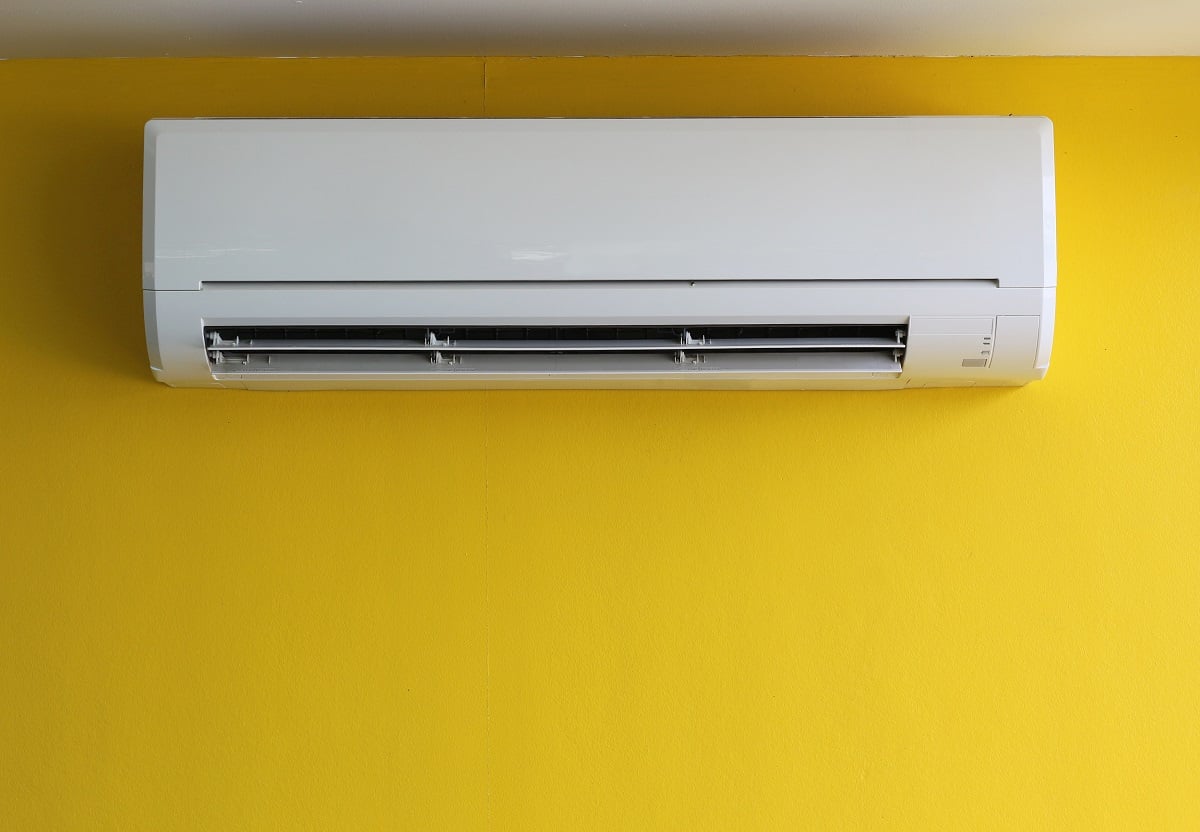
Mold is a type of fungus that can cause damage to organic matter in homes as well as having negative effects on human health. Therefore it is vital that residents are able to recognise the signs of mold as well as taking some simple steps to prevent its growth, which we outline in this article.
Mold reproduces by releasing spores, which are spread through air, water and via other organisms such as pets. These spores are fairly prevalent in homes and some people are sensitive to them even when weakly concentrated, however it is when they find suitable environments to develop into areas of mold that risk levels rise.
The Causes of Mold and How to Prevent It
Mold thrives on moisture. The primary cause of moisture is leaks and humidity, with the latter being a huge factor in Dubai, especially during the summer.
Air conditioning units in particular can be a great source of moisture for mold. This can happen due to a leak or even due to condensation on the evaporator coil. This issue is exacerbated by the fact that the spores from this mold are then blown across your home by the AC.
The best way to prevent this situation is to regularly clean your unit and check for leaks. Moreover, remember that leaving your air conditioner off can also cause humidity levels to rise, which itself leads to mold.
It is not just Air Conditioners that are lead to excess moisture. Given the humid climate in Dubai and the differences in temperature between outdoors and indoors, it is also important to make sure that gaps around windows and other entry or exit points are sealed. This extends to avoiding leaving front doors open in villas, as the cold air meeting the warm humid air from outside will certainly cause condensation.
As a rule of thumb, anything over 60% relative humidity is a risk. At this level, condensation isn’t even a requirement, as mold spores can actually draw moisture directly from air which is that humid. To monitor this, you can easily find a cheap hygrometer online and any dehumidifier should have this measurement built in.
As well as humidity, mold also thrives on warm temperatures. Needless to say, this is hard to avoid given the UAE climate, however as mentioned above, leaving your air conditioner off for long periods of time is an additional risk.
Other ways to prevent mold are good ventilation and depriving it of a food source. Encouraging good ventilation is another reason why you shouldn’t leave your AC off for long periods of time (such as holidays). By circulating air, you prevent moisture from gathering and don’t give mold the chance to settle.
Mold feeds off organic material such as wood and wallpaper. Another culprit is cardboard boxes, especially if they are allowed to get damp or wet. These are like magnets to mold spores and can lead to real issues. Aside from wood and paper, mold can also use dead skin cells as a food source and natural fibers like cotton or linen. Therefore, by regularly vacuuming and cleaning surfaces with disinfectants, you can certainly help prevent mold from proliferating.
Signs You May Have Mold Growth in Your Home
There are some telltale signs that you may have mold present in your home. Here is what you should look out for:
Allergy Symptoms – If you start to experience allergy symptoms like sneezing, itchy eyes, and nasal congestion or if these symptoms suddenly worsen, it could be that there is mold growing in your home that you are unable to see.
Musty Odor – Mold smells musty, similar to decomposing leaves. You may have smelt mold on food that has been left out and gone bad – the smell of mold growing in your home is similar.
Water Damage or Leaks – As mentioned above, mold thrives on moisture and leaks are a key source of this moisture. If you notice new water stains on ceilings or walls then you could have a leak.
Condensation on Windows and Metal Surfaces – Another primary source of moisture and therefore an indicator of that your home is at risk of developing mold growth. You may notice windows and mirrors fogging up or moisture gathering on metal surfaces due to high levels of humidity.
The Different types of Mold
There are many different types of mold and they affect humans and other organic matter in differing ways. Some molds contain mycotoxins, which can lead to the most harmful and even life threatening issues. However there are other molds that are particularly bad for people who have allergies or respiratory conditions such as asthma and more still that are dangerous for those who have weaker immune systems.
Black mold is probably the recognizable type of mold and is particularly toxic. There are different types of black mold, however the most common is Stachybotrys and contains mycotoxins. Stachybotrys is often hidden in gaps where there is poor circulation and has a strong musty smell with a slightly slimy texture (not that you should touch it!)
You may have also seen a powdery, white mold. This is often Geotrichum and it spreads quickly. It tends to affect the lungs and to cause allergies that come with symptoms such as itchy eyes.
If you have had recently had a leak in your home, then you may have invited in Aureobasidium, which thrives on water damaged areas. It starts off as pink, brown or black and matures into a darker brown colour.
These are just a few examples and are for illustrative purposes. Other common indoor molds include Alaternaria, Aspergillus, Cladosporium, Penicillium and Trichoderma. If you do suspect mold then you should call in experts immediately and avoid direct contact with your skin.
The Consequences of Mold
Mold can have a negative impact on both buildings and human health. When left untreated, mold can quickly rot away at wooden structures and drywall, causing structural damage.
Human exposure to mold spores usually comes via inhalation. In small quantities, this is not usually an issue for most people. However, some people are more sensitive to mold than others, particularly allergy sufferers and the effects of mold also depend on the type of mold, how potent it is and the duration of exposure.
In fact, sensitivity to mold and conditions associated with mold can increase after prolonged exposure. Studies have shown that it can cause allergies, asthma and other respiratory issues to develop, particularly in young children. Sensitivity to mold spores can also present itself as skin irritation and headaches. These conditions tend to be caused by allergenic molds.
Toxic and Pathogenic molds on the other hand, can cause more severe conditions such as lung scarring or bleeding, neurological issues, digestive issues caused by damage to the intestinal lining and heart issues.
That is not to say that these are common effects and taking care to avoid creating conditions for growth of mold and calling in experts when you see or suspect mold is usually sufficient to reduce risks both to your health and home.
How to Remove Mold
Whilst DIY Mold remediation is possible in some cases, it is strongly advised to call in experts to handle this. In particular, it is important to avoid direct contact with mold.
During the process of mold remediation, experts will usually cut out damaged drywall or wood and then professionally disinfect and clean surrounding areas, whilst wearing protective gear such as masks and gloves.
You should also expect mold remediation experts to cover the area with plastic sheeting. This is to limit the dispersion of mold spores into other parts of your home and you should insist on this. Likewise, it is important that they use HEPA air scrubbers and vacuums. This helps to clean air that is full of mold spores and safely replace it with clean air.
Do not be alarmed by the use of strong products. Professional cleaners will use antimicrobial chemicals to remove mold residue and stains and will usually seal the area to avoid moisture build up in future. However, it is advised that pregnant women and young children are removed from the area to avoid unnecessary exposure to these chemicals.
What is most important is to make sure that you call experts with experience of mold remediation as this is a specialist area that needs to be dealt with by professionals.
Air Conditioning and Mold Growth
Air Conditioning is an integral part of life in Dubai. However, when not maintained correctly, air conditioners can be a catalyst for mold growth. Here are some AC facts and tips to bear in mind:
Your AC as a Dehumidifier
A properly working air conditioner also works as a dehumidifier for your home. It pulls excess moisture from the air and drains it externally.
Another way your air conditioner can fail to dehumidify your home is when it has a lack of refrigerant due to a leak. The evaporator coil can freeze over and your home will not cool down as it should. Unwanted moisture will remain inside as the airflow over the coil slows or ceases.
Air Conditioner Installation
Improper installation of your AC unit or ductwork might be the cause of problems with humidity and indoor moisture control.
The Importance of Regular Maintenance
Prevent mold and mildew damage before it starts by keeping your AC unit professionally maintained. This means scheduling preventative maintenance with your HVAC company every year to ensure that your air conditioner is running smoothly and efficiently.
Maintenance includes inspecting, cleaning, and lubricating your system as well as recharging refrigerant to the proper levels. This will also prevent blocked drainage tubes, something that can cause mold growth when not noticed and quickly fixed.

